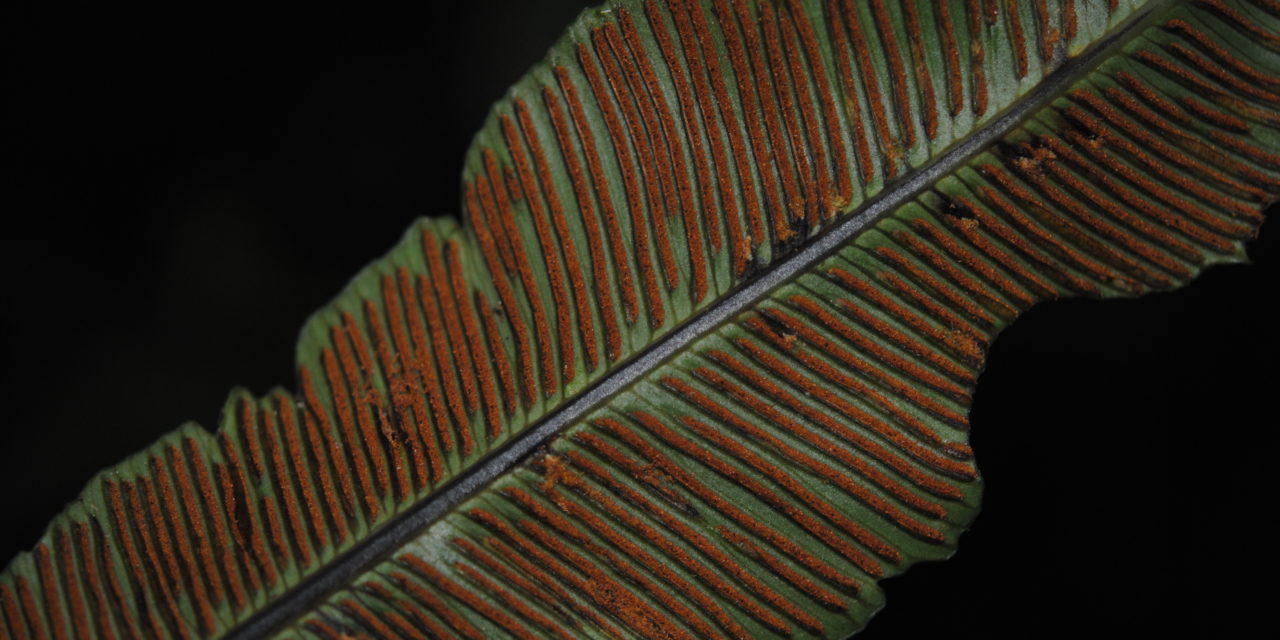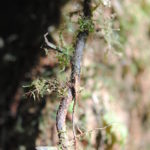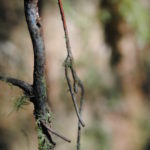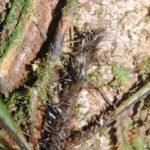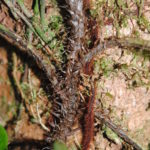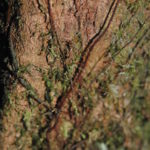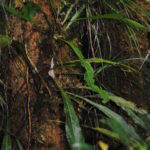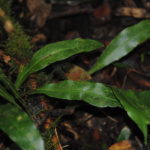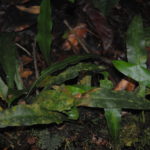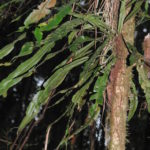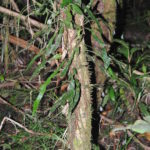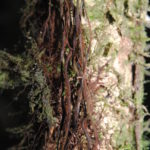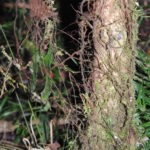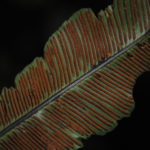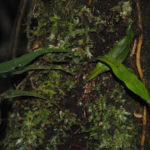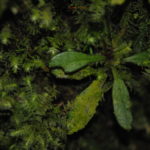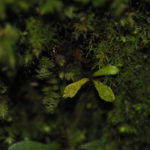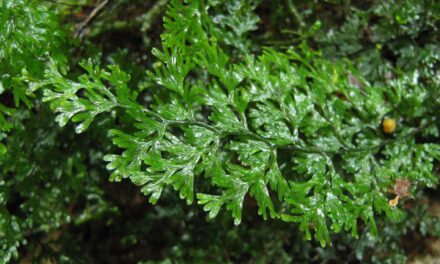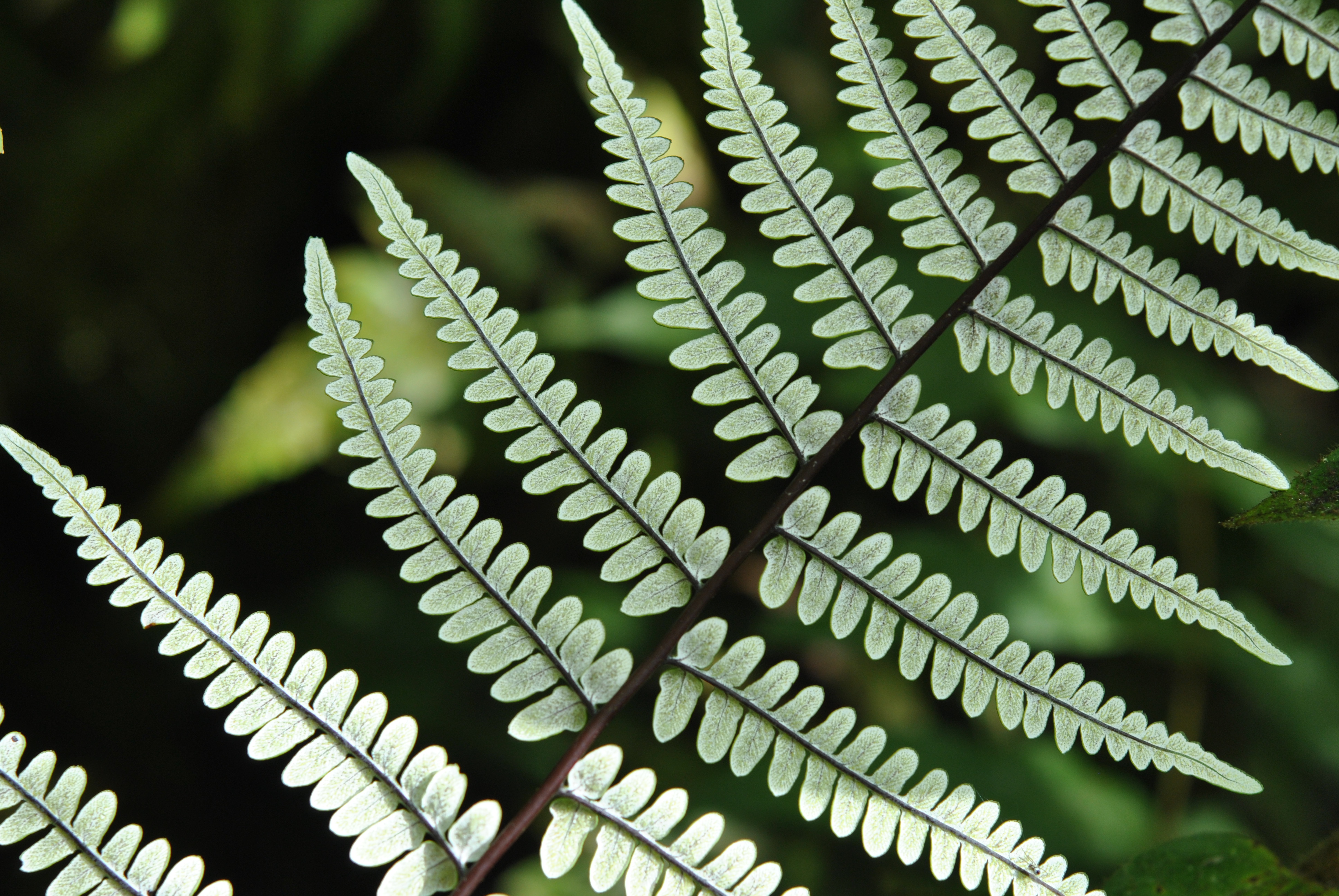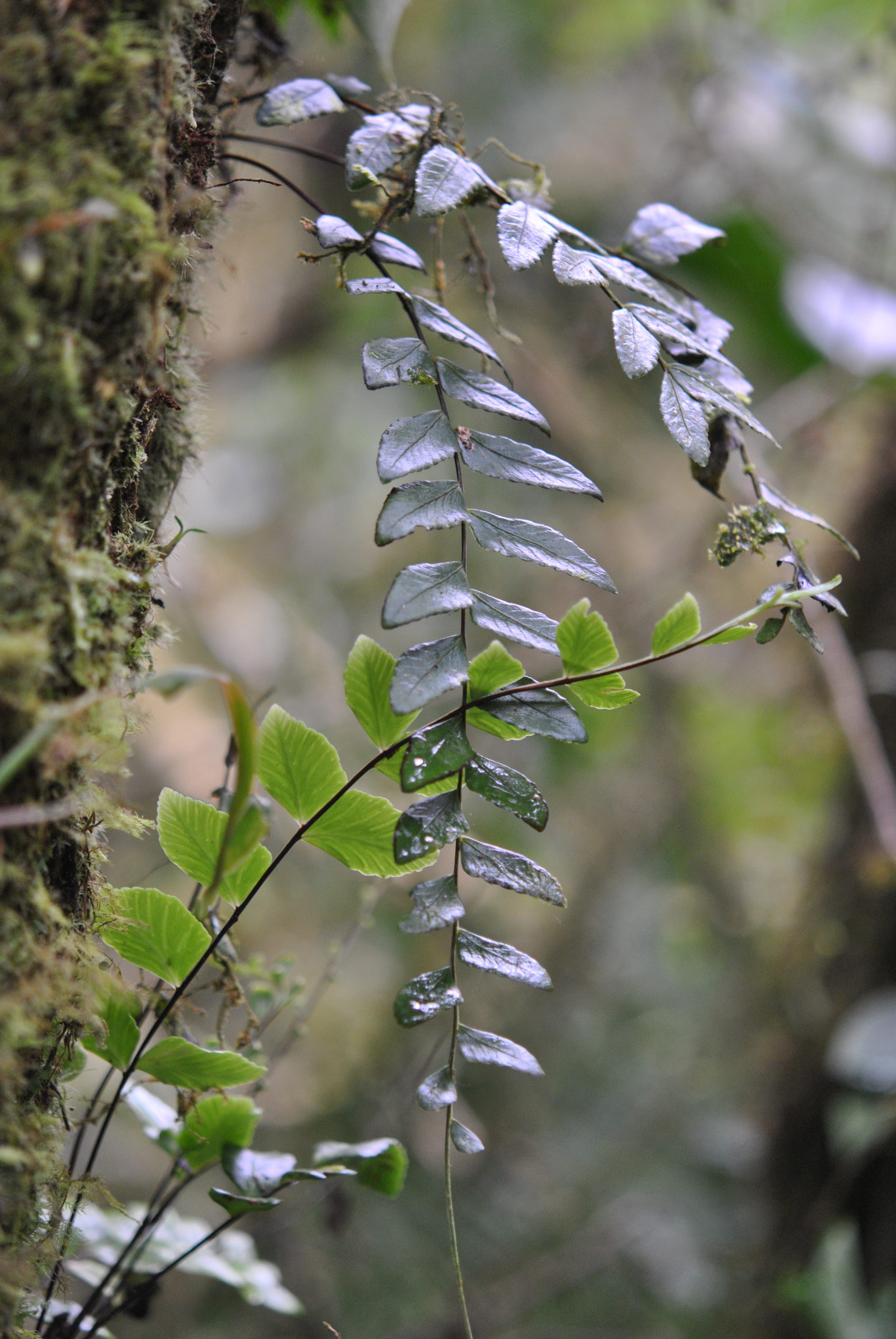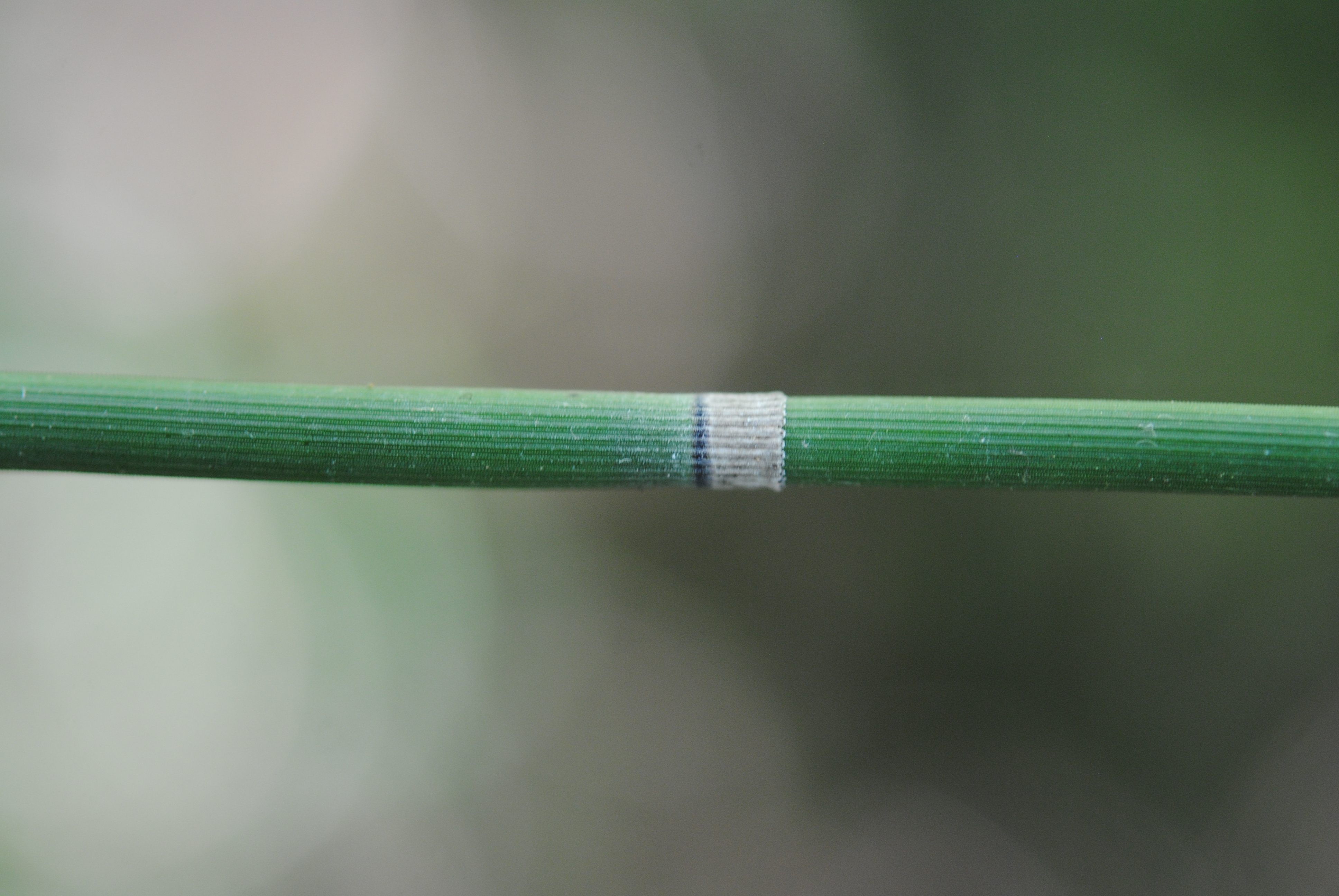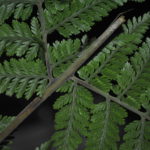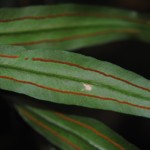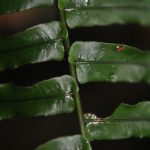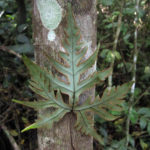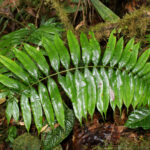Previously I misidentified this specimen as A. amboinense, but that differs by having smaller rhizome scales with denticulate margins. Observations made during field work suggest that Asplenium acrobryum is a primary hemi-epiphyte, closely matching the syndrome described by Testo & Sundue (2014). Previously I misidentified this specimen as A. amboinense, but that differs by having smaller rhizome scales with denticulate margins. Observations suggest that it too grows as a hemiepiphyte.
Testo, W., & Sundue, M. (2014). Primary Hemiepiphytism in Colysis ampla (Polypodiaceae) Provides New Insight into the Evolution of Growth Habit in Ferns. International Journal of Plant Sciences, 175(5), 526-536.
Collection Data (M. Sundue 3773)
Classification & Common Names
- Class: Polypodiopsida
- Family: Aspleniaceae
- Genus: Asplenium L.
- Species: Asplenium acrobryum Christ
- Var./Subsp.:
- Common name(s):
General Collection Data
- Date: 7-VIII-2014
- Primary Collector & #: M. Sundue 3773
- Collection Party: M. Sundue M. Lehnert D. N. Karger D. Quandt S. Noben K. Mar B.-C. Ho Y. Mei L. Lewis
- Det. History: M. Sundue
- Habitat: Montane rainforest with Pandanus palms and Nothofagus
- Habit: Hemiepiphyte
- Specimen Locations: LAE, VT
Additional Comments
Collection Location
- Location: Bundi – – – Madang – Papua New Guinea.
- Coordinates: 5°45'32.3958"S, 145°14'9.2076"E
- Elevation: 1800 m

